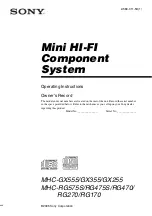
24
Microphone Lines
Most mics carry signals of a magnitude of millivolts not volts. The protection of such a low level signal is
much more complicated. In Section 11.2 the problem of signal-to-noise ratio was covered. Here the same
problem exists, because whereas with a signal of 50 volts the effect of any mains interference is minimal,
with a signal that can be a thousand times smaller the ratio is obviously smaller. Therefore microphone
lines nearly always operate in the balanced line mode. The mic diaphragm generates an electrical signal,
which is either positive or negative depending on the direction of travel. The +ve and -ve signals are
inverse images of each other. If connected together they would cancel each other out, resulting in a zero
signal. In fact this effect is what makes the balanced line system work. Instead of connecting the negative
signal to earth, as in an unbalanced system, at the same time losing half the signal or 6 dB, the two lines
are kept separate until they reach an electronically balanced input or transformer. Now the explanation:
The amplification of a signal causes the reversal of its polarity. By inverting the negative side and adding
it in a ratio of 1:1 to an unchanged positive, a balanced input loses none of the available signal. In the
process, it also subtracts the interference picked up along the line. Random noise is unaffected, but no
hum will be heard, and noise from badly screened thyristor controlled light dimmers will be greatly
reduced. You could not run a live show without balanced mic lines, and although in the studio cables are
shorter, the demand on signal to noise is far greater, so balanced line connections are standard there too.
☞
When patching a balanced line input/output to an unbalanced one, short the -ve and screen together
at the unbalanced input or output end.






































